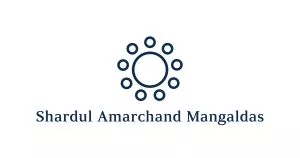- within Energy and Natural Resources, Environment and Accounting and Audit topic(s)
- with readers working within the Healthcare, Utilities and Law Firm industries
In the recent unfolding debacle of global trade, the World Trade Organization ("WTO") could, once again, become the stage for a high-stake confrontation, especially with China, invoking the principles of multilateralism, requesting formal dispute consultations against the United States over the imposition of a universal 10% tariff on all imports, effective 5 April 2025, and a 34% additional duty on all Chinese imports, effective 9 April 2025 (tariff rates as of the date when China initiated its WTO consultation; however, the cumulative tariff burden on Chinese imports may be up to 245% on certain goods, owing to the combined effect of multiple trade measures imposed by the United States). China argues that these measures violate U.S. obligations under the General Agreement on Tariffs and Trade, 1994 ("GATT"), particularly Articles I:1 and , particularly Articles I:1 and II:1(a) & (b) of GATT. For countries other than China, including India, the country-specific reciprocal tariffs have been suspended for a 90-day (ninety- day) period from 10 April 2025 to 9 July 2025.
The challenge by China underscores its commitment to challenging what it perceives as unilateral and protectionist measures that contravene established international trade norms, established through agreements, including the General Agreement on Tariffs and Trade 1994, the Agreement on Customs Valuation and the Agreement on Subsidies and Countervailing Measures. The WTO's dispute settlement mechanism, designed to facilitate dialogue and resolution, now bears the weight of escalating tensions between the world's two largest economies.
While China is attempting to leverage the WTO framework to address its grievances, other countries are adopting a more cautious approach (by way of negotiating bilateral trade agreements), possibly due to diplomatic considerations or skepticism about the WTO's current capacity to enforce rulings effectively. This disparity raises questions about the future role of the WTO in resolving trade disputes and maintaining a rules-based international trading system.
For example, India's decision not to engage in a formal complaint against the tariffs imposed reflects a strategic calculus, including evaluating the existing tariffs / quotas it has in place. India appears to be weighing the potential benefits or efficacy of instituting legal action, against the broader implications for its bilateral relations with the US. This restraint may also be influenced by the current challenges facing the WTO's appellate mechanism, which has been hamstrung by the lack of appointed judges, thereby limiting the efficacy of its rulings.
Legal Framework of WTO dispute resolution mechanism: A Tool for Resolution or Delay?
The dispute settlement mechanism provided for under the WTO Agreement is considered a central pillar of the multilateral trading system, and WTO's " unique contribution" to the stability of the global economy and trading relations between nations. The WTO's dispute settlement framework is governed by the Understanding on Rules and Procedures Governing the Settlement of Disputes (commonly referred to as the Dispute Settlement Understanding or "DSU") which is a dispute resolution framework adopted under the WTO Agreement (Annexure 2 of the WTO Agreement), supervised by the Dispute Settlement Body ("DSB"). The DSU significantly strengthened the procedural architecture that existed under the erstwhile GATT regime of 1947, thereby enhancing the quasi-judicial nature of the system.
Key innovations introduced by the DSU include binding timelines for resolving disputes, a near-automatic right for complainants to secure the establishment of a panel, and the adoption of panel reports through a negative consensus rule (meaning they are accepted, unless all members oppose adoption). It also established a permanent Appellate Body to review panel findings and introduced robust compliance mechanisms, including the right to impose countermeasures and provisions for cross-retaliation under specific conditions.
While the WTO dispute resolution framework is structurally robust, its dispute resolution life cycle can be prolonged due to procedural formalities, consensus-driven processes, and extended compliance periods. The continued paralysis of the Appellate Body has further weakened the system's ability to deliver binding outcomes. The dispute resolution process under the WTO framework is briefly discussed below.
1. Consultation Process:
The WTO's dispute settlement process begins with consultations under Article 4 of the DSU, which are designed to facilitate the amicable resolution of disputes, undertaking to "accord sympathetic consideration", without formal adjudication. Any member that believes another member has adopted a measure inconsistent with WTO agreements may request consultations under the DSU. This phase provides a 60-day (sixty-day) window, during which the disputing parties are expected to engage in good-faith negotiations to settle the matter. If no resolution is achieved during this time, or if the respondent member refuses to engage, the complainant may proceed to request the establishment of a panel with 3 (three) or 5 (five) panelists, as may be required, as per Article 8 of DSU. The efficacy of this mechanism hinges on mutual goodwill and strategic alignment.
2. Panel Adjudication:
When consultations fail, the complaining party may escalate the matter by requesting the establishment of a panel under Articles 6, 8, and 11 of the DSU. Pursuant to the request, a panel is formed in the DSB meeting, typically comprising three independent trade law experts, established through a "negative consensus" rule—meaning that unless all WTO members agree not to establish the panel (an extremely unlikely scenario), it will be created. Although parties are expected not to oppose panelist nominations without "compelling reasons" (Refer Article 8.6 of DSU), disagreements over appointments often require the WTO Director-General to determine the panel's composition. Once formed, the panel examines the legal and factual claims, and issues an interim report, followed by a final report, usually within 6 (six) months. This report includes findings on consistency of the measures complained of under GATT / WTO obligations, and recommends corrective measures, which are submitted to the DSB for adoption—again under the negative consensus procedure, making the rulings legally binding.
3. Appellate Review: A System in Suspension
Either disputing party may appeal the panel's findings to the appellate body under Article 17 of the DSU ("Appellate Body"). The Appellate Body, comprising seven members, reviews only issues of law and legal interpretation raised in the panel's report. It may uphold, modify, or reverse the panel's legal findings / conclusions. Appeals are to be concluded within 60-90 days (sixty to ninety days) (Refer Article 17.5 of DSU). Once the Appellate Body's report is circulated, it is adopted by the DSB, using the same negative consensus method and becomes binding on the parties.
In the past, India has consistently and actively utilized the WTO dispute settlement mechanism, reflecting a deliberate and strategic engagement with the multilateral trading system — therefore, suggesting a history of lack of hesitation or avoidance. With 24 cases as a complainant, 32 as a respondent, and participation as a third-party in 184 cases, India has demonstrated a clear willingness to assert its global trade rights and remedies, through the WTO mechanism. This commitment is further reflected in India's continued advocacy for restoring the Appellate Body and advancing meaningful reforms to strengthen the WTO's dispute resolution architecture.
However, since December 2019, the Appellate Body has ceased to function due to the blockage of new appointments, particularly by the US. The United States has not only blocked appointments to the WTO Appellate Body but has also withheld funding to the WTO and other multilateral organizations, signalling a broader strategy aimed at disabling institutional mechanisms that constrain its unilateral trade policy preferences.
As a result, panel reports under appeal remain in legal limbo, posing a significant challenge to the enforceability and efficacy of the dispute settlement system formed under the WTO. As a result, while panels can still be formed and issue reports, any appeal effectively renders the ruling unenforceable, given that during such appeal period, there is a restriction on the DSB adopting the panel report – operating much like an automatic stay, a tactic now referred to as 'appeal into the void'. This legal vacuum leads to a bifurcated world: WTO rulings without consequences and growing trade tensions without clear remedies.
In response to the effective suspension of the WTO Appellate Body in 2019, a subset of WTO members entered into the Multi-Party Interim Appeal Arbitration Arrangement ("MPIA"), effective from 30 April 2020. While the MPIA offers a stop-gap interim solution, it only applies among consenting members, which excludes the Unites States. As such, in a dispute between India and the US, even a successful panel ruling can be rendered moot through an appeal under the DSU framework.
India's Strategic Calculus:
The collapse of the Appellate Body has serious implications for the legitimacy of the consultation process. Without a functional mechanism to appeal or enforce a panel ruling, the strategic value of entering the WTO process is significantly diluted. Members may appeal rulings into the void, stalling implementation indefinitely. The decline in new WTO dispute filings since 2020 signals an erosion of confidence.
The weakening of the WTO's Appellate Body has fundamentally changed the strategic calculus of member states. For countries like India, this raises a normative dilemma: whether to uphold the WTO's legal process despite its inefficiencies resulting in mere performative diplomacy rather than substantive conflict resolution, or to pursue pragmatic bilateral settlements that may be expedient but lack legal clarity and predictability.
While India has actively used the WTO mechanisms in the past to challenge trade measures by other members, it also exercises caution, especially in the current context where the Appellate Body is non-functional. This strategic restraint is evident in India's decision not to initiate consultations in response to the US's recent tariff measures, possibly due to concerns over the enforceability of rulings, and broader geo-political considerations at play presently, including the need to counter and keep in check China's fast growing economy and trading and military capacities, while it is actively agitating measures against the US, including imposing further counter-tariffs and dragging the US to the WTO.
China, meanwhile, appears to be engaging more aggressively with the US in the wake of its recent tariff measures, without attempting towards negotiating a cooperative bilateral framework. In contrast, India's calibrated shift does not represent a rejection of multilateralism, but rather a tactical hedge in an increasingly fragmented trade order. That said, the continued suspension of a rules-based appellate forum like the WTO's Appellate Body raises serious concerns for global trade governance. Without an impartial arbiter, the system tilts dangerously toward power-driven diplomacy, undermining the very spirit of the Marrakesh Agreement and threatening the legitimacy of the global trading regime.
The content of this article is intended to provide a general guide to the subject matter. Specialist advice should be sought about your specific circumstances.




